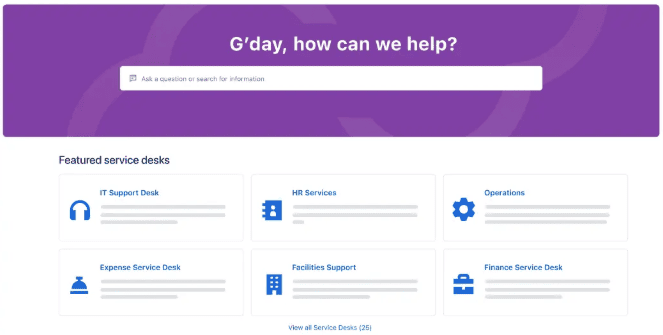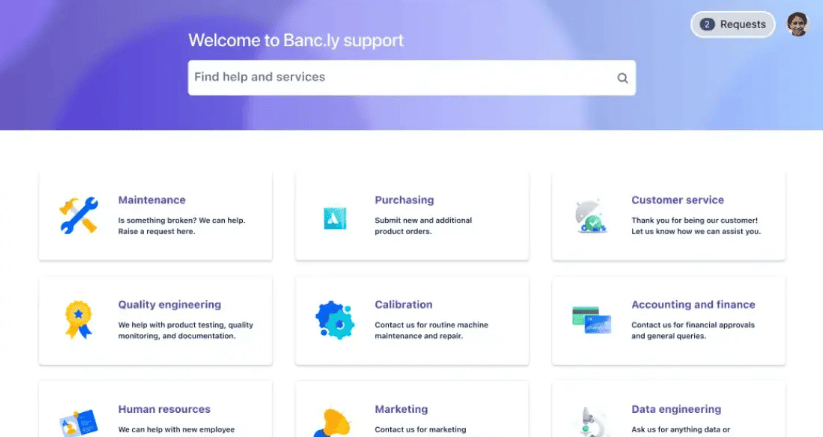
Service Management, once viewed as a cost center primarily concerned with resolving customer issues, has fundamentally transformed into a strategic business pillar. In the modern digital economy, effective service delivery is synonymous with customer retention, brand loyalty, and revenue growth. Traditional service management models, often characterized by fragmented tools, siloed data, and heavy manual processes, inevitably lead to high operational costs and subpar customer experiences—making service feel hard. This article explores a multi-dimensional, platform-centric approach to transition from reactive, difficult service management to a smarter, proactive, and unified system using the integrated suite of Zoho solutions, specifically focusing on how to architect a holistic service desk utilizing tools like Zoho Desk, Zoho SalesIQ, and powerful automation via Zoho Flow.
The Service Management Challenge: Hard vs. Smart
The current service landscape is fraught with inefficiencies that make work "hard" for agents and frustrating for customers. The challenge is not simply to automate tasks but to fundamentally redesign the service ecosystem to be smart—leveraging Artificial Intelligence (AI), unified data, and process automation to preempt issues and resolve complex queries with minimal friction. Zoho provides a unique, comprehensive answer to this challenge through its seamlessly integrated platform, often referred to as Zoho One for full business integration, which positions service management as an intelligent, interconnected engine of business success.
Zoho Desk is the foundational application for service management within the Zoho ecosystem, designed as a highly customizable, contextual, and AI-powered help desk software. Its architecture is explicitly built to centralize and process multi-channel customer interactions, offering a single source of truth for all service data. The core philosophy of Zoho Desk is to leverage context and automation to ensure that every service interaction is smarter than the last.
Omnichannel Unification and Contextual Ticketing
Unlike legacy systems that bolt-on new channels, Zoho Desk is natively omnichannel. This architecture ensures that a customer's query, whether via email, live chat (integrated with Zoho SalesIQ), phone, social media, or self-service portal, is converted into a unified Ticket object. The true value lies in the context enrichment process. When a new ticket arrives, Zoho Desk's native integration with Zoho CRM and Zoho Books automatically pulls relevant data—customer purchase history, account value, active projects, and past interactions—and displays it in the Agent Workspace.
Analysis: The Agent's 360-Degree View. Agents equipped with the full customer context (e.g., "This is a high-value customer with an active sales quote and three open tickets on a related product") can immediately prioritize and personalize their response. This eliminates the "hard" work of data retrieval, allowing agents to focus on the soft skills of service. Zoho Desk’s interface promotes this efficiency by displaying this contextual data right alongside the ticket thread, ensuring no agent is ever flying blind.
Zia in Service Management
Zoho's proprietary Artificial Intelligence, Zia, is deeply embedded within Zoho Desk, transforming it from a simple ticketing system into a predictive service hub. Zia's functions are multi-faceted, ranging from agent assistance to managerial insights and customer-facing automation.

To make service smarter, standardized, consistent, and compliant processes are essential. Zoho Desk's Blueprint feature allows organizations to design and enforce process automation for complex, multi-stage service workflows (e.g., Product Returns, Advanced Troubleshooting, or Warranty Claims). Blueprint acts as a state-machine, guiding agents through mandatory steps, conditional actions, and status transitions, ensuring regulatory compliance and high-quality service delivery every time.
Long Description: Eliminating Process Drift. In a typical service environment, agents often take shortcuts or miss vital documentation steps (process drift). Blueprint mitigates this by making the "hard" work of process adherence automatic. An agent cannot move a return ticket from "Inspection Pending" to "Refund Approved" without first completing a mandatory "Damage Report" step and uploading a photo, for example. This feature is crucial for industries with strict regulatory requirements, such as finance or healthcare, making service management compliant and non-negotiable.
Proactive Engagement and Interdepartmental Synergy
True excellence in service management goes beyond simply processing tickets. It demands a multi-dimensional strategy that incorporates proactive customer engagement and seamless collaboration across the entire business. Zoho enables this through deep-level platform integration between its applications.
Combining Zoho Desk and Zoho SalesIQ
The integration of Zoho SalesIQ (live chat, visitor tracking) with Zoho Desk (help desk) creates a unified front-office for both sales and service, transforming customer service from reactive to proactive. SalesIQ monitors website visitors, identifying high-value customers or those struggling with a key page (e.g., the billing section). The ability to initiate a chat proactively based on these behavioral triggers is a game-changer.
Novel Coverage: The Service-Sales Handoff Protocol. When a visitor on the pricing page is proactively engaged by a SalesIQ bot (Answer Bot) and their query is determined to be a complex technical support issue, the chat is instantly converted into a high-priority ticket in Zoho Desk. All chat transcripts and visitor context (pages viewed, time on site) are transferred, providing the Desk agent with the full narrative before they even begin typing. This is a novel, high-efficiency 'smart' handoff that eliminates the "hard" work of a customer having to repeat their issue.
Orchestrating Workflows with Zoho Flow
Zoho Flow acts as the middleware, the nervous system that connects and automates processes across Zoho apps and third-party systems, ensuring the "Smarter, Not Harder" mandate is met through advanced orchestration. Flow allows users to create "Flows"—automated sequences triggered by events in one app that execute actions in another.
Detailed Scenario: Inventory-Service Management Automation.
Trigger: A new ticket is created in Zoho Desk with the tag "Critical Part Failure."
Action 1 (Zoho CRM): An alert is created for the account manager in Zoho CRM to follow up on the high-priority customer.
Action 2 (Zoho Inventory): A flow triggers a check in the company's Zoho Inventory for the replacement part stock level.
Action 3 (Zoho Desk/Email): If the part is in stock, the Flow updates the Desk ticket status to "Awaiting Shipment" and sends a customized, automated confirmation email to the customer (via Desk's email templates).
Action 4 (SMS/Notification): If the part is out of stock, the Flow creates a high-priority task for the purchasing department in Zoho Projects and sends an automated SMS alert to the Service Manager.
This level of automation ensures that complex, cross-departmental service processes—which are typically the hardest and most time-consuming—are executed in seconds, with perfect consistency, and zero manual intervention, leading to superior customer experience.
Service Management extends beyond the external customer to include internal stakeholders. Zoho Desk can be configured to manage internal requests, acting as an IT Help Desk (for employee tech support) or an HR Service Desk (for policy questions, onboarding requests, etc.). This makes the management of internal service smarter by leveraging the same high-efficiency, standardized tools used for external customers.
Analytical Insight: Maximizing Resource Utilization. By consolidating internal and external service under the Zoho Desk platform (using separate Departments or Portals), organizations reduce software license sprawl and cross-train agents more efficiently. Zoho Desk's Knowledge Base can be segregated: one public-facing for customers, and one private-facing for employees (internal IT guides, HR FAQs), drastically reducing the load on internal support teams. This is a critical factor in scaling service operations without exponentially increasing headcount.
The final, and perhaps most crucial, step in making service management smarter is leveraging data for continuous, evidence-based improvement. Zoho Desk's reporting and dashboard capabilities are designed to turn raw service data into actionable, strategic business insights. Zoho Desk provides over 30 built-in reports and dashboards that track key service metrics. Beyond traditional metrics like First Response Time (FRT) and Average Handle Time (AHT), the integration of Zia allows for tracking unique, strategic KPIs.

A smart service operation is one that empowers its customers and employees to solve their own problems. The Knowledge Base within Zoho Desk is the core of this self-service strategy. Its tight integration with Zia's Answer Bot and Search function ensures that content is discoverable and constantly utilized. Moreover, Zia can automatically suggest turning successful ticket resolutions into new Knowledge Base articles, keeping the resource perpetually updated—a massive reduction in the hard work of manual content creation. The transition from a "hard" to a smarter service management operation is not a function of adding more agents or tools; it is a strategic business transformation powered by an integrated platform. Zoho’s suite—anchored by Zoho Desk and augmented by the proactive power of Zoho SalesIQ and the orchestration of Zoho Flow — provides the essential components for this change. The system is designed to automate the repetitive, administrative, and data-retrieval tasks that make service hard, freeing human agents to focus on high-empathy, complex problem-solving that truly drives customer loyalty and brand value.

